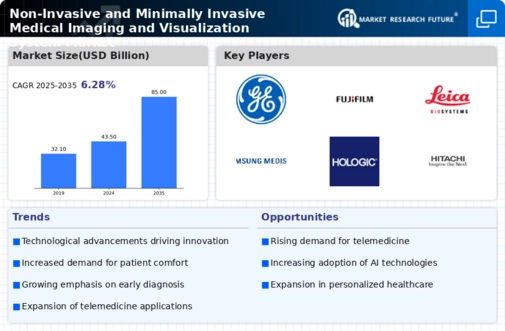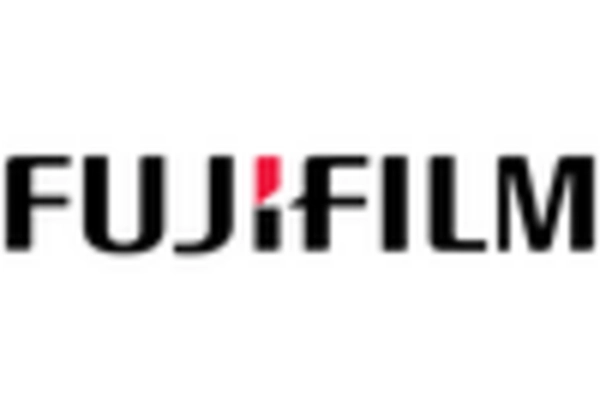Focus on Preventive Healthcare
The focus on preventive healthcare is reshaping the Non-Invasive and Minimally Invasive Medical Imaging and Visualization System Market. Healthcare providers are increasingly emphasizing early detection and prevention of diseases, which non-invasive imaging techniques facilitate. By enabling timely diagnosis, these systems can help in reducing the overall healthcare costs associated with late-stage disease management. The market is witnessing a shift towards integrating imaging technologies into routine health check-ups and screenings, which is likely to enhance patient outcomes. Data suggests that preventive imaging services are gaining traction, with a growing number of healthcare facilities adopting these practices to improve patient care and reduce the burden on healthcare systems.
Rising Prevalence of Chronic Diseases
The rising prevalence of chronic diseases is a critical driver for the Non-Invasive and Minimally Invasive Medical Imaging and Visualization System Market. Conditions such as cardiovascular diseases, diabetes, and cancer require regular monitoring and accurate diagnosis, which non-invasive imaging techniques can provide. As the global population ages, the incidence of these diseases is likely to increase, necessitating advanced imaging solutions for effective management. Market data indicates that the demand for imaging services is expected to rise in tandem with the growing patient population, with projections suggesting a significant increase in imaging procedures over the next decade. This trend underscores the importance of non-invasive methods in the ongoing battle against chronic illnesses.
Increasing Demand for Non-Invasive Procedures
There is a notable increase in the demand for non-invasive procedures within the Non-Invasive and Minimally Invasive Medical Imaging and Visualization System Market. Patients and healthcare providers alike are gravitating towards techniques that minimize discomfort and recovery time. This shift is largely influenced by the growing awareness of the benefits associated with non-invasive imaging, such as reduced risk of complications and shorter hospital stays. According to recent data, non-invasive imaging techniques account for a substantial portion of diagnostic procedures, with a significant percentage of patients preferring these methods over traditional invasive approaches. This trend is expected to continue, further propelling the market as healthcare systems adapt to meet patient preferences.
Regulatory Support and Reimbursement Policies
Regulatory support and favorable reimbursement policies are pivotal in driving the Non-Invasive and Minimally Invasive Medical Imaging and Visualization System Market. Governments and health organizations are increasingly recognizing the value of non-invasive imaging techniques in enhancing patient care and reducing healthcare costs. As a result, there has been a trend towards establishing guidelines and frameworks that support the adoption of these technologies. Additionally, improved reimbursement policies for non-invasive imaging procedures are encouraging healthcare providers to invest in advanced imaging systems. This regulatory environment is expected to foster market growth, as it not only enhances accessibility but also incentivizes the development of innovative imaging solutions.
Technological Advancements in Imaging Systems
The Non-Invasive and Minimally Invasive Medical Imaging and Visualization System Market is experiencing rapid technological advancements that enhance imaging capabilities. Innovations such as 3D imaging, artificial intelligence, and machine learning are revolutionizing diagnostic accuracy and efficiency. For instance, the integration of AI algorithms in imaging systems has been shown to improve the detection rates of various conditions, potentially reducing the time required for diagnosis. Furthermore, advancements in imaging modalities, such as MRI and CT scans, are enabling more precise visualization of internal structures, which is crucial for effective treatment planning. The market is projected to grow significantly, with estimates suggesting a compound annual growth rate (CAGR) of over 10% in the coming years, driven by these technological improvements.

















Leave a Comment